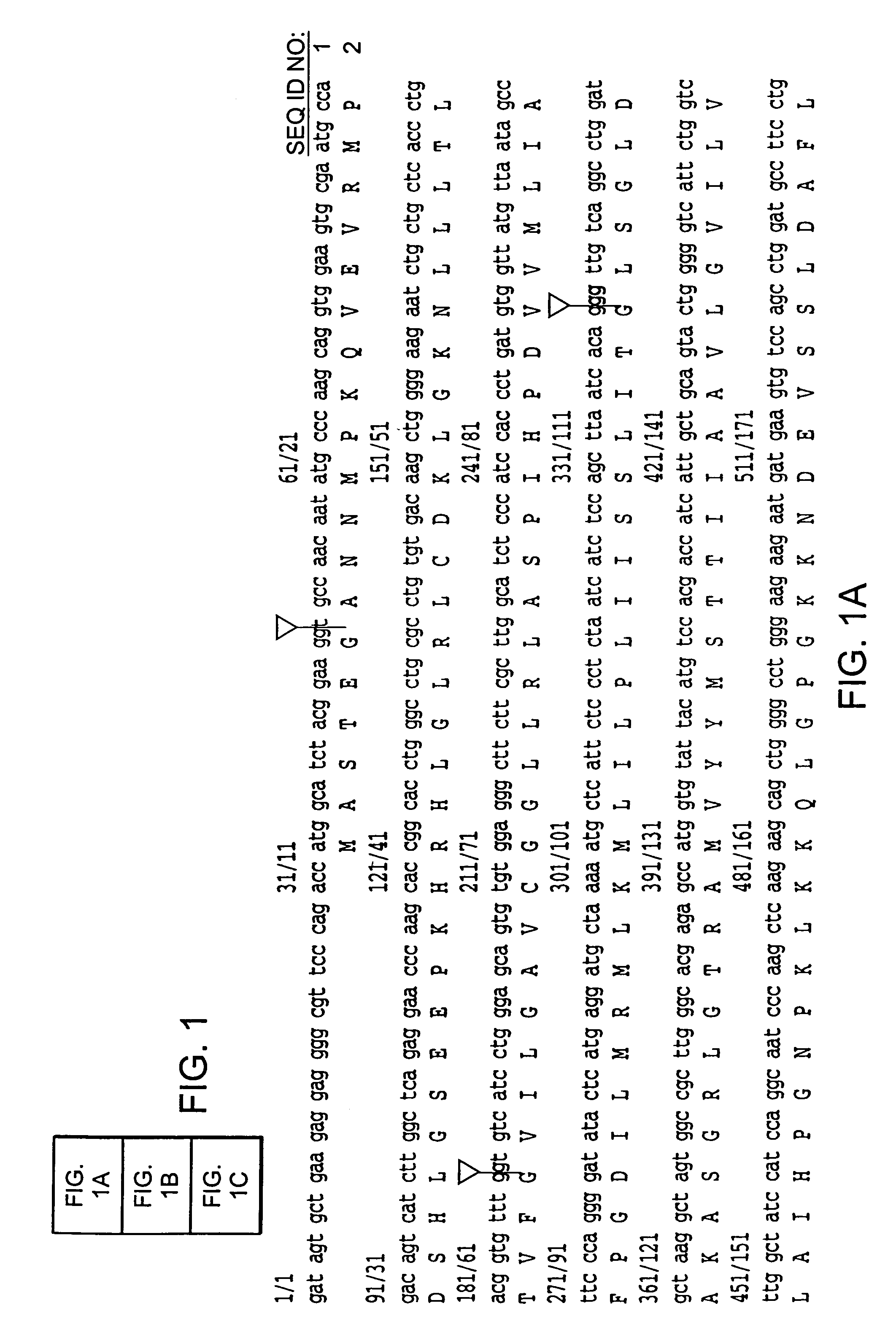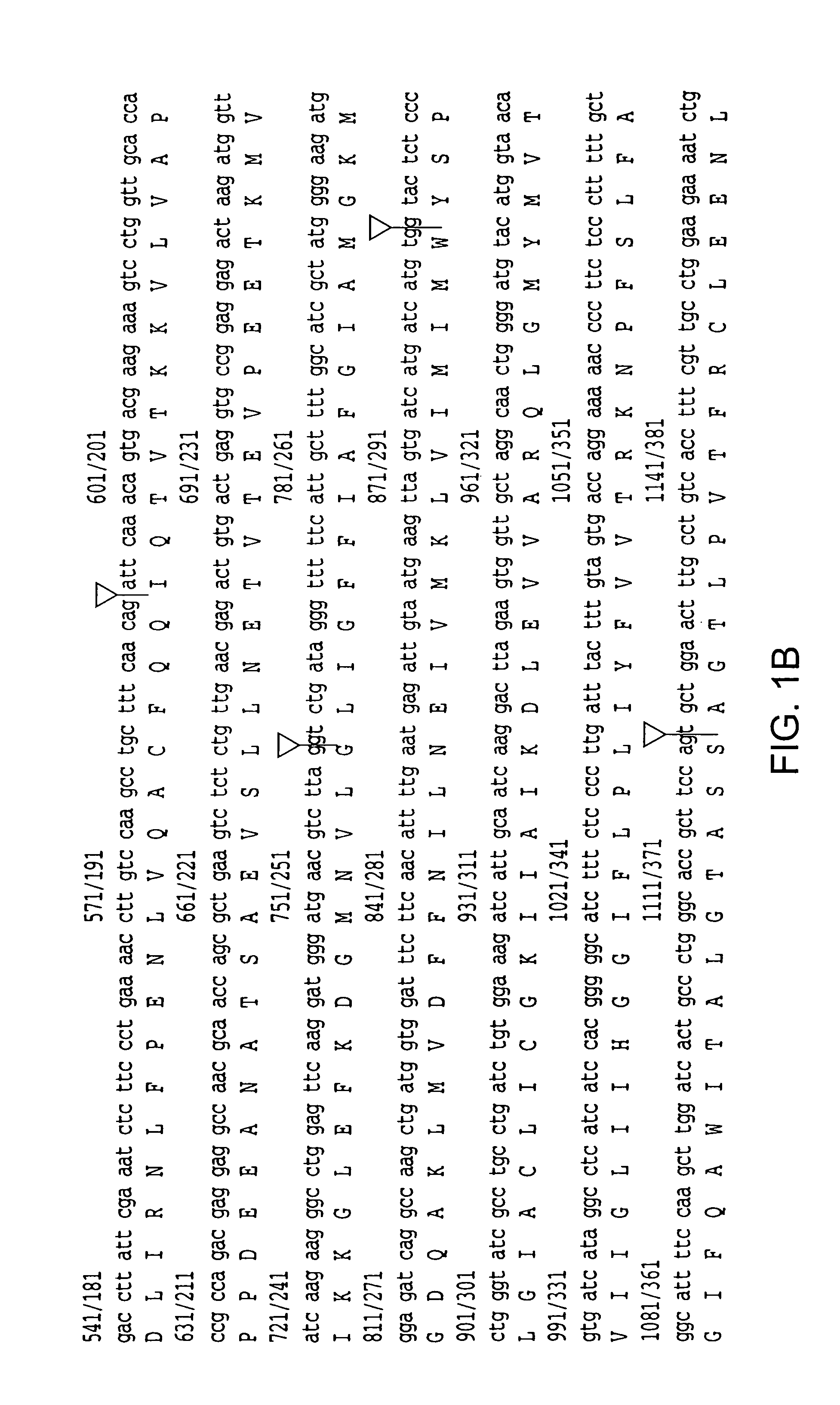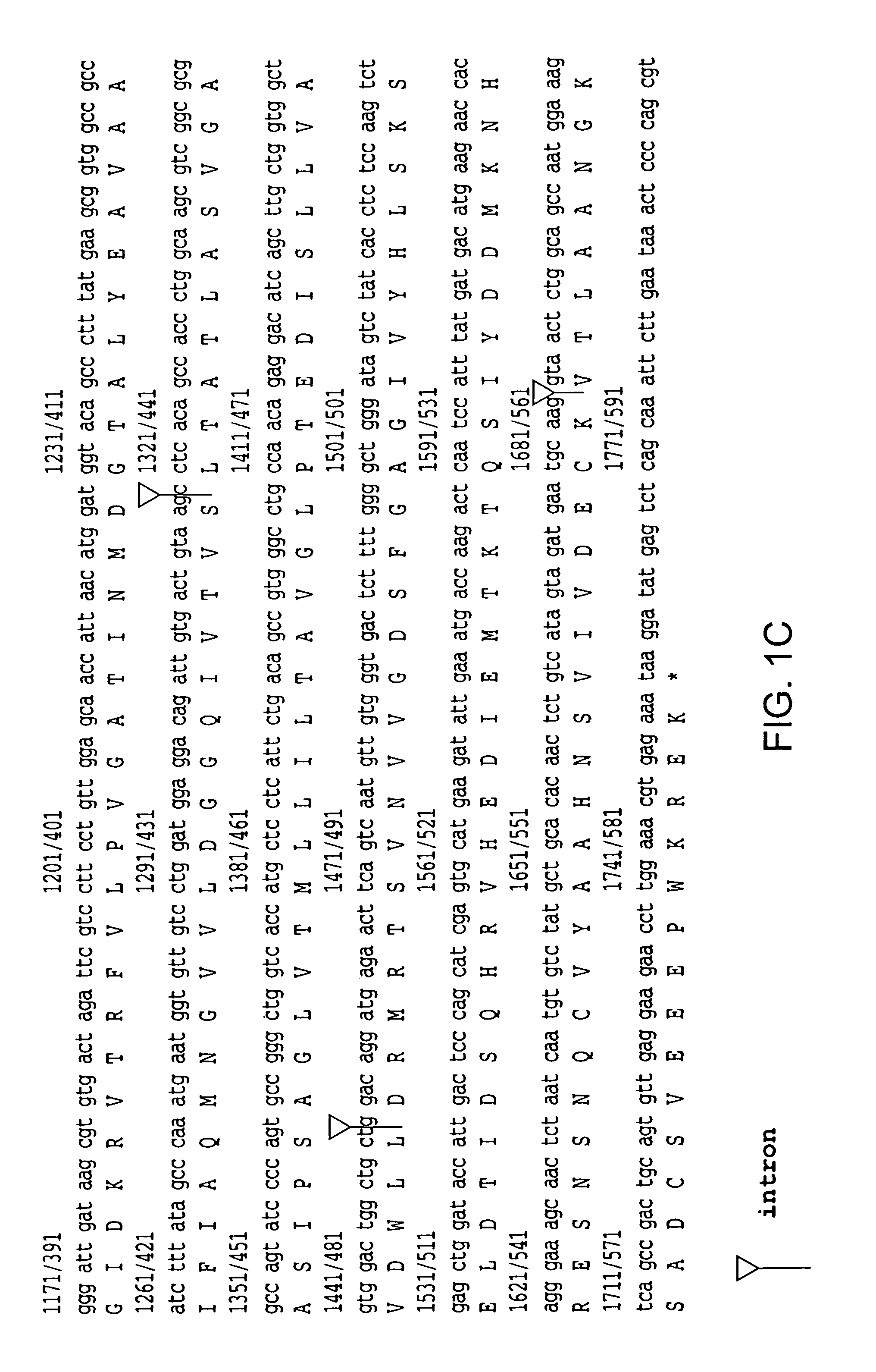Aberrant glutamate transporters and methods of use
a glutamate transporter and glutamate technology, applied in the field of new drugs, to achieve the effect of reducing the levels of drugs, and reducing the amount of drugs
- Summary
- Abstract
- Description
- Claims
- Application Information
AI Technical Summary
Benefits of technology
Problems solved by technology
Method used
Image
Examples
example 1
Identification of Aberrant EAAT 2 Transcripts in ALS Affected Areas
[0167]1. cDNA from Patient Motor Cortex
[0168]A male ALS patient (66 years old, 5 hr postmortem delay), without SOD1 mutations, was initially investigated. This patient was chosen because immunoblot studies revealed extremely low levels of EAAT 2 protein (5% of control) in motor cortex (Rothstein et al. (1995) Ann. Neurol. 38, 73). The Northern blotting revealed that the quantity and size of EAAT 2 mRNA were normal (Bristol, L. A., and Rothstein, J. D. (1996) Ann. Neurol. 39, 676). To investigate whether there were aberrant EAAT 2 mRNA species, a cDNA library was constructed from a poly (A)+ mRNA prepared from the motor cortex of this patient. The cDNA library was then screened and an abnormal cDNA clone was subsequently identified from positive clones by restriction analysis. Sequencing of this clone revealed that it contained 1091 bp of the EAAT 2 coding region from exon 1 to exon 7, followed by 1008 bp of intron re...
example 2
Aberrant EAAT 2 Transcripts are Present In Vivo
[0189]To verify that the aberrant EAAT 2 transcripts of Example 1 were present in vivo and not a cloning or PCR artifact, in situ hybridization was performed to detect partial intron 7-retention mRNA using a riboprobe to the intronic region (FIG. 13A, probe F). FIGS. 15A and 3B show that this partial intron 7-retention mRNA was present only in ALS motor cortex, but not in control specimens, in agreement with the RT-PCR results. In addition, signals were uniformly localized to small cells, presumably astrocytes, present throughout the motor cortex (EAAT 2 is an astrocyte-specific protein) (FIG. 15D; asterisk). As a control, signals for actin (FIGS. 15C and F) were found expressed by both neurons (arrowhead) and astroglia. Wild-type EAAT 2 mRNA in ALS (FIG. 15E) and in control tissue were expressed in a distribution similar to the partial intron 7-retention mRNA. No staining was seen with sense controls. Furthermore, the dramatic loss of ...
example 4
Nuclease S1 Protection Analysis
[0192]S1 nuclease protection analysis of EAAT 2 mRNA (FIG. 16C; described below) also provided evidence that the aberrant splicing EAAT 2 transcripts of Example 1 were present in vivo. Northern analysis of EAAT 2 mRNA was difficult to use for this purpose because the size of normal EAAT 2 mRNA is about 11 Kb and the truncated transcript would only be ˜1–2 Kb smaller. Therefore, it would be difficult to identify these truncated transcripts from full length transcript using this method.
[0193]FIG. 16C shows an S1 nuclease protection analysis of EAAT 2 mRNA using a 836 base single strand DNA probe, located at 3′ end of the coding region. The protection fragments were subjected to Southern blot analysis using an oligonucleotide probe located 3′ end of the protection fragment. As with quantitative RT-PCR, the abnormal species were abundant in the ALS specimens compared to normal EAAT 2.
[0194]S1 nuclease protection assays were conducted as follows. A 836 base...
PUM
| Property | Measurement | Unit |
|---|---|---|
| temperature | aaaaa | aaaaa |
| total volume | aaaaa | aaaaa |
| nucleic acid sequences | aaaaa | aaaaa |
Abstract
Description
Claims
Application Information
 Login to View More
Login to View More - R&D
- Intellectual Property
- Life Sciences
- Materials
- Tech Scout
- Unparalleled Data Quality
- Higher Quality Content
- 60% Fewer Hallucinations
Browse by: Latest US Patents, China's latest patents, Technical Efficacy Thesaurus, Application Domain, Technology Topic, Popular Technical Reports.
© 2025 PatSnap. All rights reserved.Legal|Privacy policy|Modern Slavery Act Transparency Statement|Sitemap|About US| Contact US: help@patsnap.com



